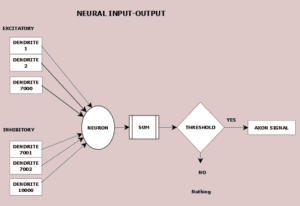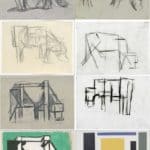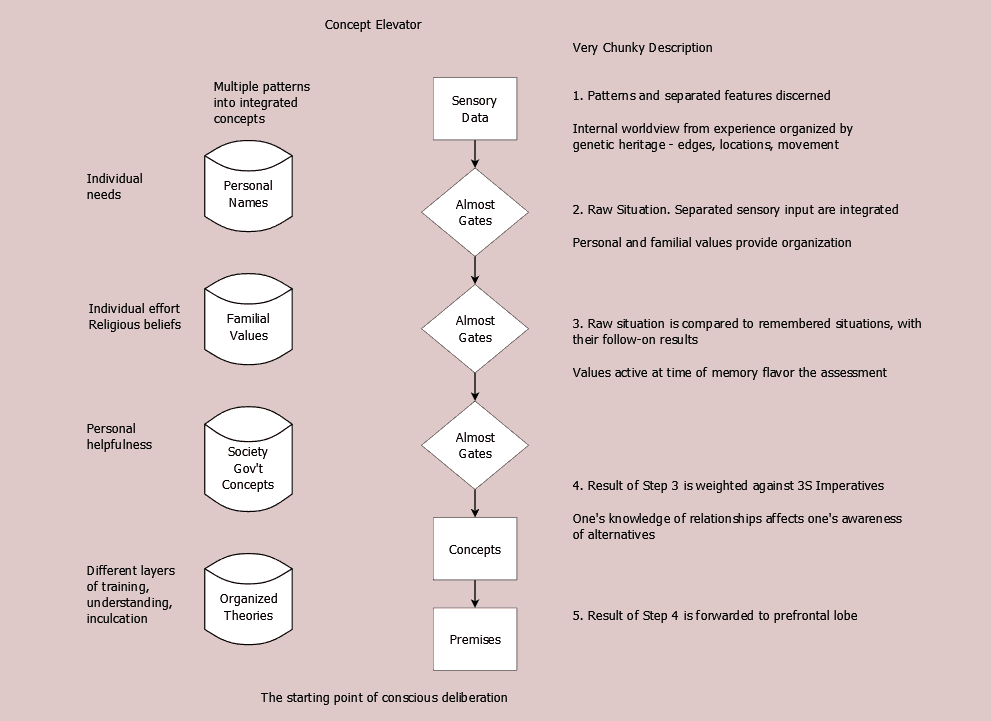Immediate Sensory Perceptions
Sensory patterns arrive at the basement of thoughts. They increase in abstraction, losing uniqueness (Figure 17.1) as they are united with memories and ranked by needs, desires, and fears. These processed abstractions converge onto our unified worldview upon which we base our decisions. These stages were developed in Brain through the Ages and Development of the Adult Mind.
This staging of information I call the concept elevator.
Almost Gate and Abstraction
Patterns increase in abstraction as they pass across neuron thresholds to axons to other neurons. Their trek has some identifiable stops that the concept elevator must visit.
- Sensory organs to the thalamus. Thalamus processing and vestigial paths are ignored here
- Thalamus to particular cortical location
- Path inside lobe. Enhancement of sensation. E.g. auditory: vibration, frequency, sound, combination of sounds, meaning
- Association areas of cortex.
- Integrating the various senses together
- Comparing the patterns with memories
- Pass abstractions to the frontal lobe
- Integration with knowledge
- Decision-making and action
“Information that is unique to a particular concrete instance is not frequently experienced—so connections representing this information will be lost. On the other hand, information that is consistent across concrete instances is frequently experienced—so connections that represent this information will be retained and strengthened. In this way, by experiencing many different concrete instances over childhood, the brain gradually changes its connections to extract the commonality across the situations and ignore information that varies from one concrete instance to the next. This leads to abstract representations.”
When the neural threshold was discussed (Figure 17.2) along with the neuron’s All-or-None signaling, the result was the Almost Gate, abstraction in action. Almost Gates exist at every stage of pattern processing in the brain, at every point the concept elevator passes, at every point there is further abstraction, blurring of details.
People Differences
The abstraction process Dennis Garlick describes is common across people, yet it has a distinctive character for each person. Everyone experiences abstraction, yet the Almost Gate has an idiosyncratic height for each person. The height determines how much abstraction occurs with each signal in the neural brain.
Stages of Concept Abstraction
Consider this image (Figure 17.3) from sources of thoughts. Notice the increasing abstraction, as painter Theodore van Doesburg moves away from immediate sensation. It’s an artistic interpretation of the sensory abstraction performed as an image rises in the concept elevator.
Similarly in the concept elevator, are abstractions of sensation associated with memories, knowledge, and needs, desires, and fears to decide on actions. At that point each abstraction blurs distinctions.
Stops on Concept Elevator
A model of the concept elevator is presented in Figure 17.4. It shows that particular bits of knowledge used in assembling a response to the current situation, are learned during particular stages of development.
- Personal names as developed as a child, used for basic sensory objects
- Familial values are fixed in the family circle
- Societal norms and behaviors arrive with out-of-the-home activities
- Theories organizing facts into areas of meaning are taught in school, church, and mass media
From the bases of knowledge in memory, the premises upon which make inferences are developed. Only at the final stop of the concept elevator does consciousness enter.
Exceptions
Although this concept elevator uses a simplified view of brain functioning to highlight its features, a glance at a complexity of visual processing provides additional insight into consciousness and behavior.
There are two pathways that visual data travels in the occipital lobe—where and what paths (Rita Carter, The Human Brain , p 82). The where path occurs beneath consciousness. It leads to the parietal lobe, which contains information about our body’s position and is adjacent to the cortical cells that direct movement. We do not recognize its operation in our logical, rational mind. This path is the one that is executed when you see a rock coming at your head. You do not consciously decide to duck. The order to duck does not come from the prefrontal lobe. It is not a conscious decision. You duck, although after the fact, you may say that it was because the object was coming at your head.The what path is a conscious path. It sends the shape and particulars of the object to the temporal lobe. In the what path, in the dominant hemisphere, the object is given a name. This information is then shuttled forward to the prefrontal lobe, where it serves as fodder for further thought.
The concept elevator leads to abstraction and blurring of details. As Almost Gates are repeatedly encountered, a Neural Cascade results.



